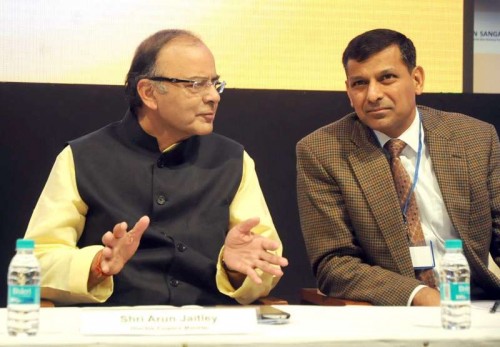
By Vatsal Srivastava
The global economy is still very much in the zero interest rate policy (ZIRP) era with the exception of the US Federal Reserve which is widely expected to raise rates this year.
Sixteen of 18 industrialized nations have seen their inflation reading run below expectations as deflationary forces continue to exert pressure on the global economy. After many years, inflation has cooled off to a level where India can aggressively begin an interest rate easing cycle to jumpstart the much talked about cyclical recovery.
Domestic growth sluggish; inflation set to undershoot RBI target
Following the CPI print of 5.4 percent in February, the consensus view is that CPI will consistently undershoot RBI’s 6 percent target through 2015 and average five percent in FY16 according to Citibank. While the monsoon is a risk factor to these forecasts, the softer inflation readings should continue on account of lower commodity prices, moderate minimum support price (MSP) hikes and a deceleration in rural wages. Growth figures are nowhere close to flattering given the equity valuations the markets are commanding. Industrial production continued to expand at a moderate pace of 2.6 percent year on year in January as compared to a revised growth of 3.2 percent last month.
On a sectoral basis, mining and consumer goods output contracted by two percent and 1.9 percent respectively in January while electricity and manufacturing output rose by a meager 2.5 percent and 2.8 percent respectively.
Ongoing economic reforms and de-bottlenecking of investments will of course add to our growth rate in the coming quarters but this must be accompanied by a large fall in the cost of capital. Negative yields made up 16 percent of the JP Morgan Global Government Bond Index following massive bond buying programs by the ECB and the Bank of Japan. Against this backdrop, I see no reason why Indian bond yields should not fall to 4-5 percent in two years. For this to happen, RBI governor Raghuram Rajan must hit the interest rate easing button faster than most expect.
The Fed and the US dollar — Rajan should not worry about a weakening INR
In the upcoming Federal Open Market Committee (FOMC) due next week, it is widely expected that the Fed will drop the word “patience” with respect to monetary policy normalization. This should lead to another leg of a broad-based greenback rally but my hunch is that the Fed wants to kill the dollar rally by verbal intervention, at least in the medium term.
The parabolic uptick in the dollar is hurting corporate offshore earnings (a 10 percent strengthening in the trade-weighted dollar lowers the estimated 2015 profit for the S&P 500 by about $3 a share, according to an earnings model created by Goldman Sachs) and also hammering down the price of WTI crude which is adding to deflationary pressures. The Fed should fear that removing “patience” without an offsetting expression of concern on USD appreciation will lead to another round of USD buying that would itself make normalization difficult.
There is a medium-term top to the dollar index at 100-105 in this column’s view and I see it making a dash to 90-95 first rather than 110. The federal funds rate futures market is pricing in a June/September rate hike by Feb chief Janet Yellen. But disappointing retail sales data and the lack of wage growth in the US labour market may just push this tightening event into 2016.
Notable market voices such as CLSA’s Chris Wood and Morgan Stanley’s chief US economist Ellen Zenter belong in this camp. If it plays out like this, we should expect gradual INR appreciation. This would support the interest rate easing cycle and if Rajan eases faster than market consensus, a sharp fall in the rupee’s value against the dollar should not be one of his major concerns.
Need 100-125 basis points of easing till next budget
We have seen the bank Nifty sell-off and underperform the broader market even after two earlier than expected rate cuts. Most of the public sector banks have been hammered and are trading well below their adjusted price to book value. The RBI governor has to do more to revive credit growth and kick start our financial system. Structural reform and fiscal easing are of course crucial, but we are living in an era where monetary policy is driving global economic activity. Rajan must also take cue from the developed market central bankers. He can use forward guidance and a dovish tone as a macro tool.
Like ECB head Mario Draghi’s “whatever it takes” and Bernanke/Yellen’s “considerable period of time, imagine the market impact if Rajan comes out and says: “We will do whatever we can to achieve 8-9 percent growth, keeping our inflation target in mind.” The recent bounce in crude prices turned out to be a dead cat bounce and is proof that US oil production is overpowering the declining rig count, OPEC and geopolitical tensions. Both crude benchmarks — WTI and Brent – are set to test their recent multi year lows with no visible catalysts for a sustained V shaped recovery. This alone should be reason enough for Rajan to go out and ease 50-75 basis points more than market consensus. Further, we desperately need a cash reserve ratio (CRR) cut as well so that the banks feel comfortable to reduce their deposit rates faster.
To be bullish on India, we need a dovish Rajan.